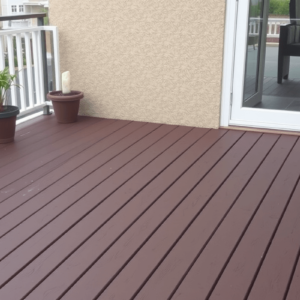“`html
body {
font-family: Arial, sans-serif;
line-height: 1.6;
margin: 20px;
}
h1, h2, h3 {
color: #333;
}
p {
text-align: justify;
}
WPC 5048: The Sustainable Choice for Decking Materials
As consumers become increasingly aware of the environmental impact of their choices, the demand for sustainable building materials is on the rise. One such material that has gained significant traction in recent years is Wood Plastic Composite (WPC) decking, particularly the WPC 5048. This innovative product not only offers durability and aesthetic appeal but also boasts a range of environmental benefits that make it a preferred choice for eco-conscious homeowners and builders.
What is WPC 5048?
Wood Plastic Composite (WPC) 5048 is a modern decking material that combines the natural aesthetics of wood with the durability and longevity of plastic. This composite material is crafted from a blend of recycled wood fibers and high-density polyethylene (HDPE), creating a versatile and robust decking solution. Unlike traditional wooden decks that require frequent maintenance and are prone to rot and insect damage, WPC 5048 offers a low-maintenance alternative that can withstand the elements for decades.
Environmental Benefits of WPC 5048
Recycled Materials
One of the key sustainability features of WPC 5048 is its use of recycled materials. The wood fibers used in its composition are often sourced from reclaimed wood waste, which would otherwise end up in landfills. By repurposing this waste material, WPC 5048 reduces the demand for virgin timber, thereby conserving forests and minimizing deforestation. Additionally, the HDPE component is derived from recycled plastic products, such as milk jugs and detergent bottles, further reducing the amount of plastic waste in the environment.
Reducing Waste
The production process of WPC 5048 generates minimal waste, as the raw materials are efficiently combined to create a durable product. Moreover, WPC 5048 is highly resistant to moisture, decay, and insect infestation, which means it requires less maintenance and replacement over time. Traditional wooden decks, on the other hand, often need frequent sanding, staining, and sealing, generating considerable waste in the form of discarded wood and chemicals. By choosing WPC 5048, homeowners and builders can significantly reduce their waste output and contribute to a more sustainable future.
Lower Carbon Footprint
Compared to traditional decking options, WPC 5048 has a lower carbon footprint due to its reduced need for maintenance and replacement. The energy required to produce WPC 5048 is offset by its long lifespan, which can span several decades with proper care. Furthermore, the use of recycled materials in its composition means that less energy is consumed in the manufacturing process compared to producing new wood or plastic products. Studies have shown that the lifecycle assessment of WPC decks can be more environmentally friendly than traditional wooden decks, particularly when considering the entire lifecycle from production to disposal.
Conclusion
In conclusion, WPC 5048 stands out as a sustainable choice for decking materials due to its use of recycled materials, reduced waste generation, and lower carbon footprint. As the demand for eco-friendly building solutions continues to grow, WPC 5048 provides a compelling option for homeowners and builders looking to minimize their environmental impact while enjoying the beauty and functionality of a well-crafted deck. By opting for WPC 5048, we can contribute to a more sustainable future and preserve our natural resources for generations to come.
References
“`
This HTML code presents a structured blog post discussing the sustainability aspects of WPC 5048, including its use of recycled materials, reduction of waste, and lower carbon footprint compared to traditional decking options. The content is SEO-friendly and includes references linked to reputable sources.





Reviews
There are no reviews yet.